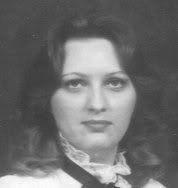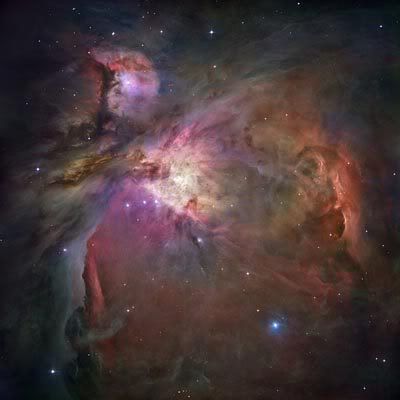Thomas Henderson 1798-1844
Scotland's First Astronomer Royal
Of all the Astronomers Royal for Scotland, only 3 were Scots, and of these 2 were born in Dundee - Thomas Henderson and Malcolm Longair. Henderson was born on 28 December 1798, the younger son of a tradesman, and educated at Dundee Academy under Thomas Duncan, rector, (later Professor of Mathematics at St Andrews) where he showed a great aptitude for mathematics and science. At 15 he entered a Dundee law office, was promoted to Edinburgh, and eventually became Secretary to the Earl of Lauderdale then to the Lord Advocate.
In Edinburgh he had access to the Observatory of the Astronomical Institution on Calton Hill, which was frequented by various city notables and gentry, and was encouraged by Professors William Wallace and John Leslie to use the modest instruments. On frequent visits to London on legal business he made friends with several astronomers including G. B. Airy, John Herschel and Sir James South who gave him full use of his observatory at Camden Hill. But Henderson had poor eyesight, perhaps a squint, and decided to concentrate on mathematical astronomy rather than observing. In a number of papers he demonstrated computational methods used in Germany but not then common in Britain, and began to be noticed by the astronomers of the Nautical Almanac, Board of Longitude and the Royal Astronomical Society. In 1830 he compiled a list of moon-culminating stars (for determining longitudes by lunar distances) for Sir John Ross's Arctic expedition.
He was turned down as a candidate for the vacant Chair of Astronomy at Edinburgh, (it was under threat of abolition, the previous incumbent, Robert Blair, having treated it as a sinecure for 42 years) and as Superintendent of the Nautical Almanac, but friends persuaded him to accept the post of Astronomer at the Cape of Good Hope. From April 1832 to May 1833, with one assistant, Lieutenant Meadows, and with indifferent instruments, he carried out a prodigious observing programme including a catalogue of the positions of southern stars, estimates of the distance of the sun and moon and observations of comets.
At the Cape he began observations of the exact position with respect to the surrounding stars of the bright star Alpha Centauri which a fellow astronomer had pointed out to him had an unusually high Proper Motion, i.e. its movement against the sky background, although in itself this was very tiny. Henderson surmised that it might be a close star. However, he resigned in 1833 with his health shattered and having had enough of the "dismal swamp" among "slaves and savages".
He returned to Edinburgh, subsisting on a small pension from his legal firm, and calculated his Cape results. The position of Alpha Centauri showed a residual error of about one second of arc (1/3600 of a degree, or 1/1800 of the moon's angular diameter) which was confirmed by observations of the star at the Cape by his successor Thomas Maclear. This was concluded to be the angle of parallax of the star against the background of distant stars, caused by the motion of the earth round the sun, and therefore the first estimate of the distance of a star at about 3.25 light years. (A later measurement gave 0.75 seconds of arc, at about 4.5 light years.) However, the great German mathematician Friedrich Wilhelm Bessel of Konigsberg, working independently and with a much superior instrument and a different method, announced a parallax for 61 Cygni, a somewhat more distant star in the northern hemisphere, 2 months before Henderson, and thereby got the Gold Medal of the Royal Astronomical Society and all the credit. Henderson had been cautious because his instrumentation was suspect, he needed confirming observations and he feared ridicule because false parallaxes had been announced before. Despite this Henderson and Bessel became friends and even holidayed in Scotland together.
In 1834 the Astronomical Institution of Edinburgh was in financial trouble. It was arranged that the Calton Hill Observatory be taken over by the government to run as a state establishment with the Observer to be jointly Regius Professor in Edinburgh University and Astronomer Royal for Scotland. Henderson was duly elected, supported by his many distinguished friends, and during the last 10 years achieved another prodigious workload with the help of his assistant Alexander Wallace, although he did very little teaching. He made some 60,000 observations, which amazed his successor Charles Piazzi Smyth, and many were published in the first volumes of The Edinburgh Astronomical Observations, but later errors were found, caused by the irregular thermal expansion of the stone pillars of the Fraunhofer transit telescope. He was a Fellow of the Royal Societies of Edinburgh and of London, but never took a degree.
But the daily climb up the hill from his official residence at 1 Hillside Crescent, and the death of his wife in 1842, were too much for a frame already weakened by heart disease. He died on 23 November 1844 and is buried in an almost forgotten corner of Greyfriars Churchyard. There is a memorial tablet to him on the west side of the Playfair Building. No proper portrait of him is known to exist.





1 comment:
He was always an inspiring , great guy !
Post a Comment